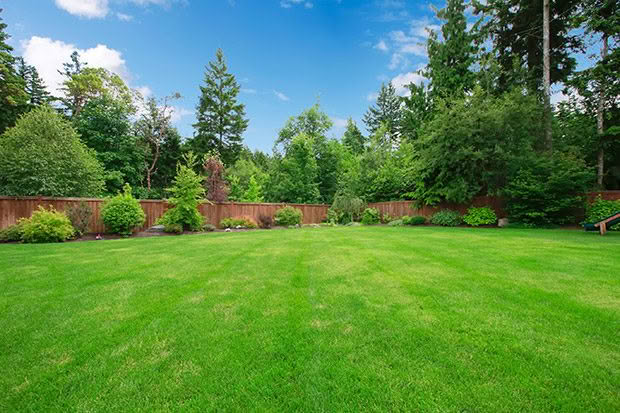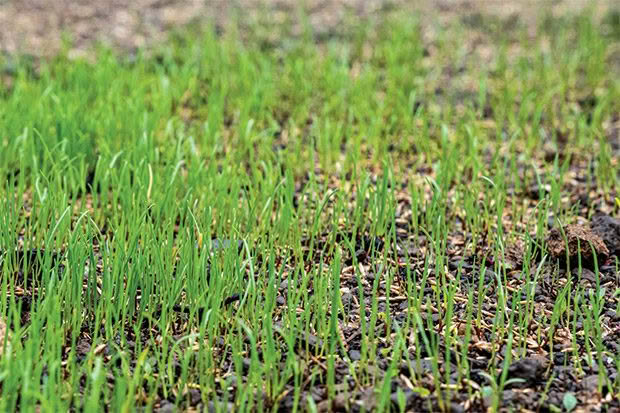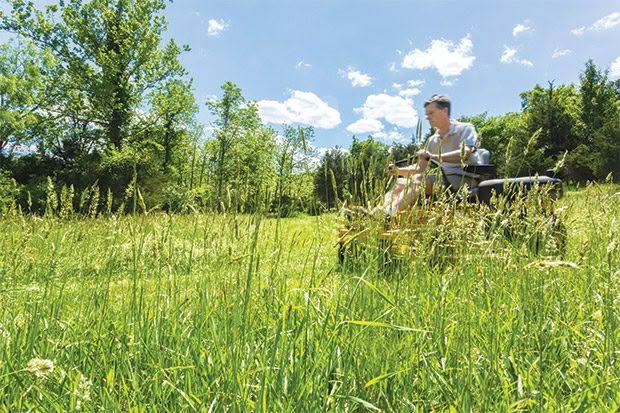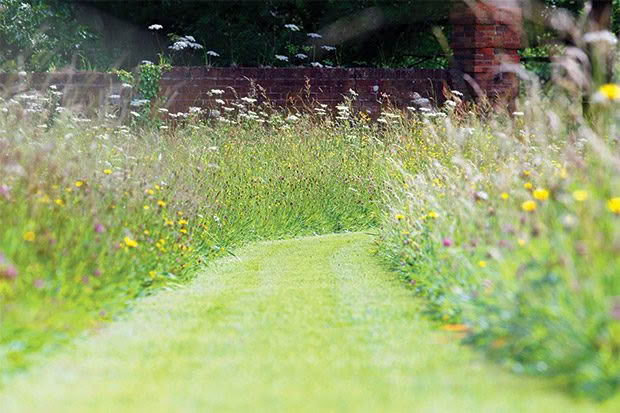How to mow your way to a lush spring lawn (PLUS bust a weed problem with your mower)

Smart mowing can beauty your property and even control weeds, if you get the timing right.
Words: Nadene Hall
It’s very easy to take a long, green lawn and turn it into a mushy, muddy mess. Here are tips for making sure it looks its best.
1. Don’t be a slasher
If your lawn has leapt ahead of your mowing schedule, you might be tempted to slash it back to its usual height with one big effort. However, this usually creates a mass of wet clippings and messy-looking, torn grass. To clip back a badly overgrown lawn:
■ only mow on a sunny warm day when the grass is dry – the ideal time is mid-morning when dew has dried off, but before the hottest part of the day;
■ if it’s really long (knee height), use a line trimmer and cut it back by 30-40% – wait a week before mowing it back by another 30-40%, then repeat a week later;
■ if it’s shaggy (mid-calf), mow it back by 50% on the first cut, then leave it for a few days before mowing it back by a third;
■ aim for an ideal height of around 3-7cm, reducing it by a third each time you mow – some lawn grass varieties look better if they’re longer, so check when you sow it;
■ to maintain a good length, mow every 10-14 days during the growing season
– in very hot or very cold weather, mowing
is often only required every 3-5 weeks.
2. Messy-looking lawn after mowing?
Whether you use a lawnmower or ride-on mower, it’s vital to have sharp blades. Blunt blades rip and tear leaves, making the cut look messy rather than neatly clipped. Shredded ends are also more likely to become diseased. If you’re confident of getting the right angle, you can use a grinder or get a drill attachment that sharpens lawn mower blades.
Ride-on owners should talk to their dealer or refer to their machine’s manual for the correct blade angle and how to remove blades for sharpening. Blades must also be balanced – if you’re unsure how to do this, have an experienced person show you, as you risk damaging the deck if you mow with unbalanced blades.
Clean out the underside of your lawnmower or ride-on after you finish, as a build-up of grass can affect a deck’s cut. Don’t tip a mower over onto its side, or the oil in a 4-stroke engine will run into the sump and muffler. Once clean, let it dry out thoroughly in an airy spot.
3. Repair bare patches
If you have a bare patch in a lawn, now is a good time to repair it.

Water regularly while waiting for seeds to germinate.
■ hand-pull weeds and ensure you get all the roots, or spray;
■ loosen the soil to a depth of 10cm – use a fork and turn it over until it’s a fine crumble. If it’s compacted or poor soil, replace it with topsoil to a depth of 5cm.
■ tamp the soil gently so it’s firm but not compacted.
■ rake the surface to loosen the top layer, sprinkle with seed – lawn seed will come with instructions on how much to apply to an area – then lightly rake again.
■ water regularly, so the soil is saturated – the seeds need to be in moist soil to germinate. It takes about 7-10 days in warm weather, up to 20 days in cooler temperatures.
■ once you see shoots, water regularly, and add more seeds to any areas you missed or where seeds didn’t germinate (or were removed by birds, insects, or slugs/snails).
■ leave seedlings to grow for at least
12 weeks. When you first mow it, make it
a very light trim that cuts off just the tips – it’s important for the plants to have as much leaf as possible to develop good roots.
Tip: Stripes look better when grass is longer – 5cm is good, 7-8cm is better. The lighter ‘stripe’ is grass leaves bending away from you; grass bent towards you looks darker. If you want to see the stripes from a certain vantage point like a deck, the stripes need to run towards and away from it, rather than across.
SECRETS TO MOWING AWAY A WEED PROBLEM
Mowing is stressful to most plants. Less leaf area means less photosynthesis and exhausts a plant’s carbohydrate storage reserves. However, some perennial weeds can replenish root carbohydrate stores very rapidly after mowing. In the case of others, removing old tissue stimulates new shoots. Mowing can also cause significant damage to nutritious pasture plants such as white clover. The most effective mowing strategy for weed control in pasture minimises the removal of growing points of desired plants and maximises the removal of growing points of weeds.

The key is in the timing and frequency of mowing and the height of the cut.
Timing: During a dry summer, a single mowing while weeds are flowering but before they set seed can reduce or eliminate a weed population. There’s also little risk of damaging ryegrass which grows more slowly when it’s hot and dry compared
to its fast growth in spring and autumn. However, if there’s good rainfall in summer, mowing acts more like pruning, stimulating weeds to regrow. More mowing is required to prevent plants from going to seed. However, this can damage ryegrass which will keep growing if there’s enough rain and cooler temperatures.
Frequency: Some weeds, such as those which spread via rhizomes (eg, couch, Elytrigia repens) have large energy storage capacities. During the first few years, mowing can stimulate shoot production and make the problem worse. However, over time, frequent mowing at each early flowering stage affects their underground reserves. Eventually, ‘good’ pasture such as ryegrass and clover start to dominate the weakened plants.
Height: Most grasses can tolerate being short when dormant (hot, dry summers, winter). Mow at 5cm high when the weeds are at the flowering stage, and the grasses are dormant. If good pasture plants are still growing, mow above their height, so you only cut off the weed tops, which tend to bolt and flower a lot higher than ryegrass and clover. This minimises seed production and reduces the weed’s growing vigour without defoliating the plants you want to keep.
Source: Mowing to Manage Noxious Weeds, Montana State University
3 SUMMER MOWING TIPS
1. Always have a fire extinguisher close by. It’s crucial that it only takes you seconds to use it – a flame can become an out of control fire within 30 seconds and can move through grass at up to 20km/h.
2. Ideally, mulch plants so they can break down into the soil.
3. Mower blades must be sharp and moving at a high RPM. Dull and/or slow blades shred grasses, making it more difficult for leaves to regrow; they can also pull plants out of the ground.
THE RISE OF THE LAZY LAWN

The ‘lazy lawn’ is officially en vogue. Rather than immaculate stripes, there’s huge interest in more sustainable lawn options such as clover which is more resistant to dry periods, staying green and not growing as fast as lawn grasses. Other options include:
■ leaving patches of long grass (known as ‘mini meadows’);
■ sowing wildflowers, either annuals or a mix of annuals and perennials;
■ sowing nectar and pollen-rich flowers to feed bees and other pollinators;
■ ornamental grasses.
Love this story? Subscribe now!
 This article first appeared in NZ Lifestyle Block Magazine.
This article first appeared in NZ Lifestyle Block Magazine.
